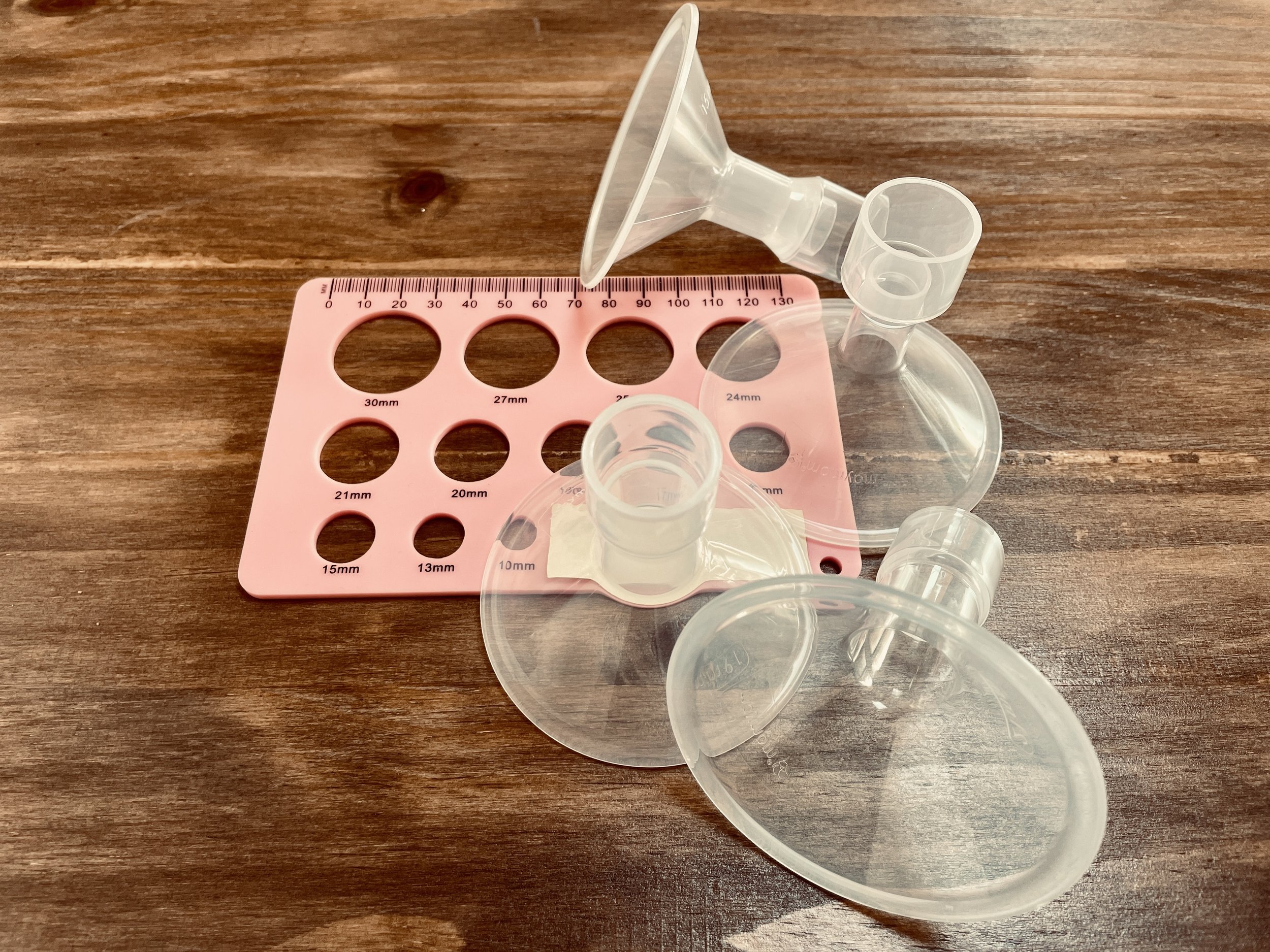The Secret to Comfortable & Effective Pumping
Flange Size Matters
Written by: Nicole Salter, RN, IBCLC
When it comes to breast pumps, one size does not fit all, and size matters.
One of the most commonly overlooked step in preparing to pump is finding out which flange will fit you best.
Did you know that you might need a different sized flange for each breast?
Breast pump flanges are funnel-shaped plastic cups that fit over your nipple and areola during pumping. Using the correct flange size is essential because it significantly impacts how effectively your pump will work for you and how comfortable your pumping sessions will be.
The wrong fit, too large, too small, or too short, can result in nipple pain, damage, and additional time pumping that could be spent enjoying just about anything else.
How can you determine the best flange size for you:
Measure your nipple size:
The first step in determining the right breast pump flange size is knowing your nipple size.
A Lactation Consultant can properly measure and help determine which flange size will fit best.
Consider your breast size:
The size of your breast also plays a role in determining the flange size. If your breasts are large, you may need a larger flange size to accommodate more breast tissue.
Pay attention to how your nipple fits in the flange:
When you use a breast pump, pay attention to how your nipple fits in the flange. It should be centered and not rubbing against the sides of the flange. If your nipple is too small or too large for the flange, you may experience discomfort or reduced milk output.
Try different flange sizes and shapes:
Using the right flange is crucial for a comfortable and efficient pumping experience.
If you're having trouble finding one that fits well, a Lactation Consultant can help.
Copyright © 2023, Thrive Lactation & Wellness All rights reserved.

